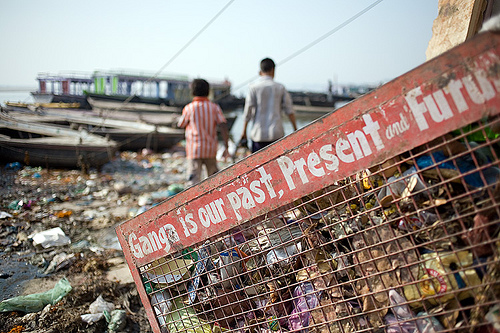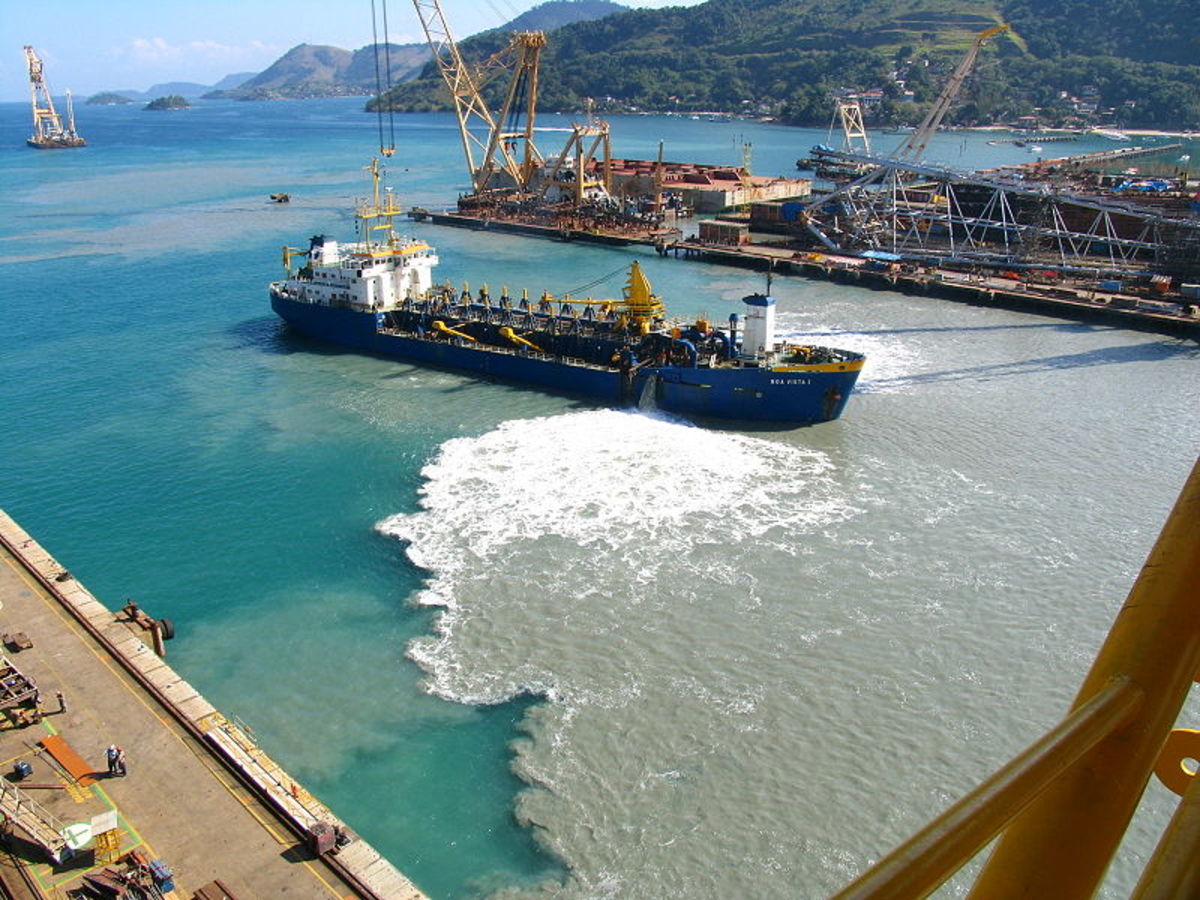Crimes against a Goddess: the pollution of the Ganges

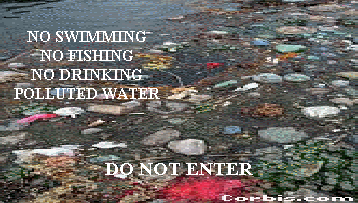
Introduction
Rivers are now under threat worldwide, freshwater is becoming scarcer and more polluted. Although we humans recognize that life on Earth would be nonexistent without freshwater, we disregard this fact by abusing pure rivers and our sources of freshwater.
Rivers are the lifeblood of our civilization, yet we treat them as we treat our toilets by leaving all our waste in them to be flushed away downstream.
The "World Watch Reader" reports: "The Nile, the Ganges, the Amu Dar'ya and Syr Dar'ya, the Yellow River and the Colorado are each now so dammed, diverted, or overtapped that, for parts of the year, little or none of their freshwater reaches the sea. Their collective diminution portends not only worsening water shortages and potential conflicts over scarce supplies, but mounting the ecological damage." Moreover, the remaining freshwater that the rivers of the world carry is often so severely polluted by domestic sewage and industrial poisons that the rivers now threaten the very life they once nurtured.
Nearly 70% of all the water available in India is polluted. Major causes, as usual, of water pollution are discharge of untreated community and industrial waste into the rivers and streams, the increasing use of fertilizers and pesticides and dumping of organic and inorganic wastes into water bodies. There has been a steady deterioration in the quality of water of Indian rivers over several decades. India’s fourteen major, 55 minor and several hundred small rivers receive millions of litres of sewage, industrial and agricultural wastes. Most of these rivers have been rendered to the level of sewage flowing drains. There are serious water quality problems in the cities, towns and villages using these waters. Water borne diseases are rampant, fisheries are on decline, and even cattle are not spared from the onslaught of pollution. This is the "gift" of the industrial revolution!
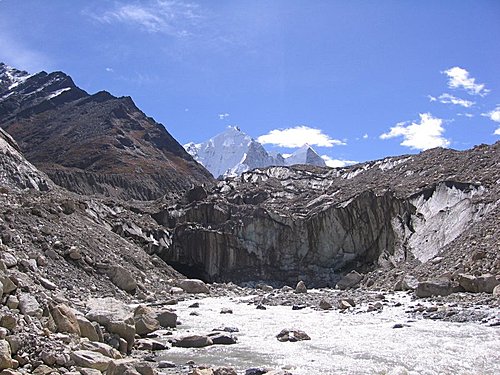
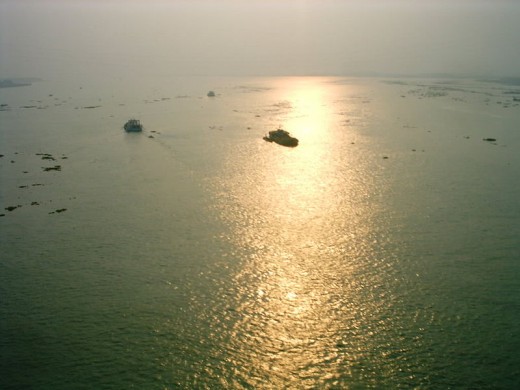
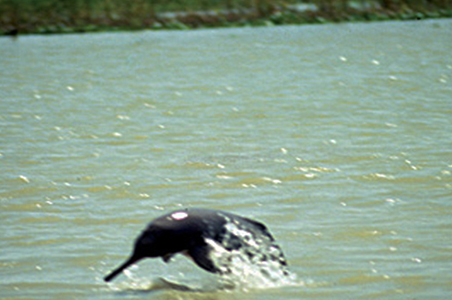
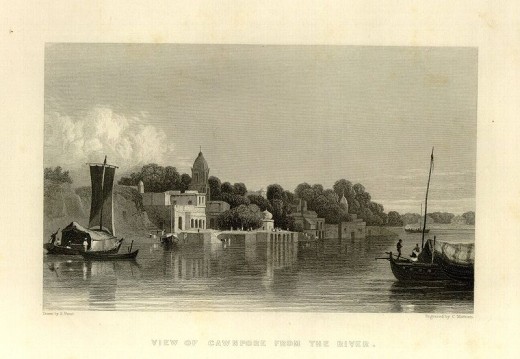
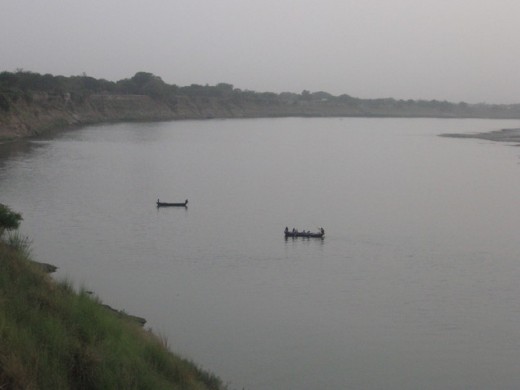
To India's Hindu people, the Ganges is a holy river. Each day, large numbers of Hindus bathe, drink from or take a dip in the river for religious reasons. For some time now, this romantic view of the Ganges has collided with India's grim realities. During the past three decades, the country's explosive growth (at nearly 1.2 billion people, India's population is second only to China's), industrialization and rapid urbanization have put unyielding pressure on the sacred stream. It is often called Mother Ganges by the people of India because it literally brings them life. However, with increased pollution in the river, it seems that the river may be spelling disaster for hundreds of millions of people who depend on the river for their lives. But religious love is a strong motivation for environmental activism in India, which fairly well distinguishes it from the dominant form of environmental activism tipically found in the United States. The undercurrent of Indian thought which is fundamentally based on the acknowledgement of the interconnectedness of all life on earth thus holds all sources of life in high reverence. The Ganges occupies a special place in this scheme of reverence, and even now, a dip in the Ganges is considered to be considered to be highly meritorius.
So the Ganges is highly polluted. Already, the World Wildlife Foundation has declared the Ganges to be one of the 'top ten rivers at risk' in the world. Ganga, the most sacred of rivers for Hindus, has become polluted for some years now. But a recent study by Uttarakhand Environment Conservation and Pollution Control Board says that the level of pollution in the holy river has reached alarming proportions. Things have come to such a pass that the Ganga water is at present not fit just for drinking and bathing but has become unusable even for agricultural purposes. Due to these serious pollution problems of the Ganges, bathing in and drinking the river's water has become very dangerous. The main source of the pollutants is the 29 cities (with population over 100,000), 70 towns and thousands of villages along the banks of the Ganges, about 400 million people- almost one-third of the country's population- live in the Ganges river basin and very little of the sewage produced by these people and by the industries and 29 large cities in the basin, is treated; so, apart from raw sewage, industries are also major polluters.
Know better this sacred river: the Ganges winds 1,500 miles across Northern India, from the Himalaya Mountains to the Indian Ocean; the Ganges river originates 3,959 meters above the sea level in the Himalaya mountains of India, flowing from the Gangotri glacier, which bears ice that is four thousand years old. The global warming is almost certain to make the situation worse. About 70% of the water flowing into the Ganges come from the country's Gangotri glacier, which is now melting at an accelerating rate. If this continues, within decades, the Ganges will become a seasonal river that flows only during the rainy season. The resulting loss of water poses a severe threat to the more than 400 million people living within the Ganges basin in India and Bangladesh.
on YouTube there are more videos of this series...
The Ganges flows through many important Indian cities such as Kanpur, Prayag, Varanasi, Patna and Calcutta, before reaching the bay of Bengal. Historically also, Ganga (its hindu name) is the most important river of the country and beyond doubt is closely connected with the history of civilization as can be noticed from the location of the ancient cities of Haridwar, Prayaga, Kashi and Pataliputra at its bank. To millions of people it is sustainer of life through multitude of canal system and irrigation of the wasting load. Hundreds of the villages and even the big cities depend for their drinking water on this river.
Around 40 percent of indian population lives in the Ganges watershed. At 2,525 km, the Ganges river basin ranks among the largest in the world in drainage area and length. The Ganges brings sustenance to the alluvial Indo-gangetic Plain, which is one of the world's most bountiful food-growing areas: the Ganges and its tributaries provide a year round source of irrigation to a large area. Chief crops cultivated in the area include rice, sugarcane, lentils, oil seeds, potatoes, and wheat. The delta used to be densely forested and inhabited by many wild animals. Today, however, it has become intensely cultivated to meet the needs of the growing population and many of the wild animals have disappeared. Having a rich biodiversity (biological diversity as indicated by the numbers of species of animals and plants), with fifteen species of mollusks, fifty-one species of insects, four species of freshwater prawns, eighty-three species of fish, twelve species of freshwater turtle, and three species of river dolphins, the River is a lifeline for many aquatic creatures. But the result of pollution has been the gradual killing of one of India's most treasured resources. One stretch of the Yamuna River, the Ganges' main tributary, has been devoid of all aquatic creatures for at least a decade...
It has many tributaries, the largest tributary to the Ganga is the Ghaghara, which meets it before Patna, in Bihar, bearing much of the Himalayan glacier melt from Northern Nepal. The Gandak, which comes from near Katmandu, is another big Himalayan tributary. Other important rivers that merge with the Ganga are the Son, which originates in the hills of Madhya Pradesh, the Gomti which flows past Lucknow.
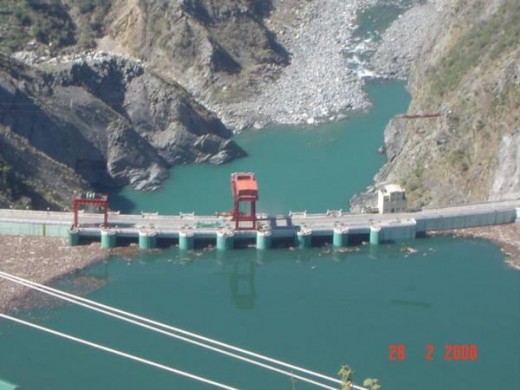
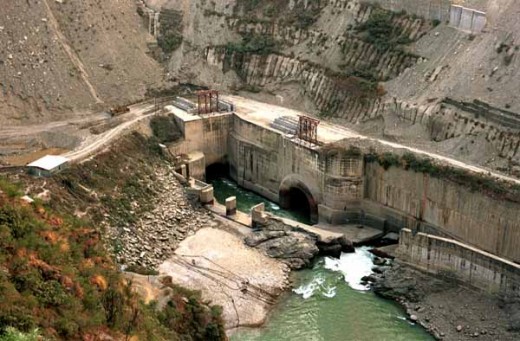

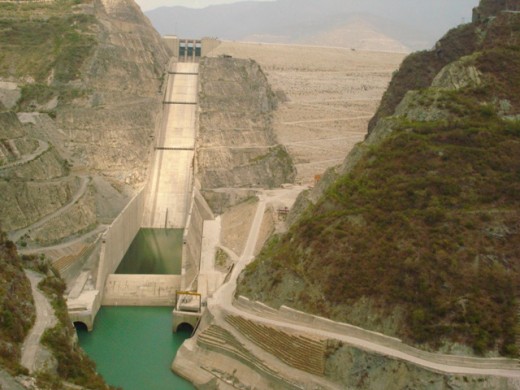
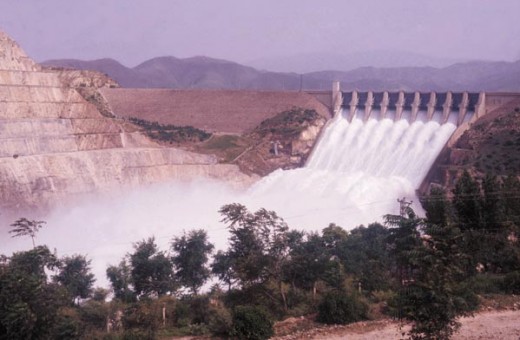
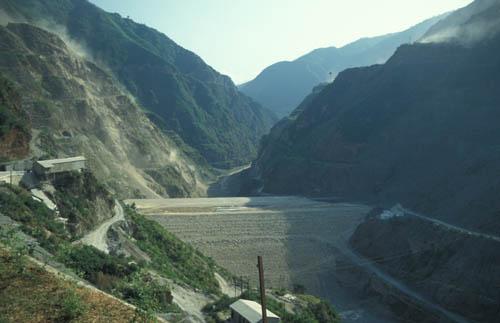
The health of the Ganga is being assaulted on a number of levels. Not only is it being subjected to overwhelming human and industrial pollution, but it is now also being threatened by the construction of massive dams. These dams are effectively throttling the Ganga at its very source, in some spots they are slowing the flow of this mighty river to a mere trickle. In addition to affecting the flow of the Ganga, the process of building dams involves a great deal of destruction to local ecosystems through blasting, drilling, deforestation and submergence. This construction threatens to displace both wildlife and local populations.
Two major dams on the Ganges, one at Haridwar and the other at Farakka, have a crucial impact on the flow of the river and another dam is proposed to be built on the upper reaches of a tributary of the Ganga, Mahakali, This Indo-Nepal project, the Pancheswar dam, proposes to be the highest dam in the world and will be built with US collaboration.
The Haridwar dam, diverting some of its waters into the Ganges Canal, which irrigates the Doab region of Uttar Pradesh, diverts much of the Himalayan snowmelt into the upper Ganges canal, built by the British in 1854. Experts contend that this has caused severe deterioration to the flow in the river and is also a major cause for the decay of the Ganges as an inland waterway: before the 19th century much of the Ganges was navigable but this declined with the construction of railroads, dams and the increasing use of water for irrigation.
Since its' commisioning, the environmental cost of the Farakka dam, in West Bengala, is very high. The construction of the Farakka Barrage at the head of the delta in West Bengal is a cause of major tension between India and Bangladesh. India claims that the port of Calcutta is being detrimentally effected by deposits of silt and by the intrusion of saline seawater. To counter these effects fresh water is diverted into the Bhagirathi River via a large canal from the Ganges at Farakka. However, after its construction the salinity of water and soil increased markedly . Also recurring floods caused by siltation and the opening of the Farakkaits Barrage sluice gates during the monsoon season resulted in extensive damage to crops. Soil moisture and groundwater levels continue to decrease and the ecosystems of the region are being damaged. Bangladesh claims that the Farakka Barrage deprives the country of a valuable source of water on which it depends because the Ganges waters are vital to irrigation, navigation and prevention of saline incursions in the Bangladesh Ganges delta region.
However in the political circle in India, people are generally not willing to concede the fact that the barrage has caused irreversible harm to the environment and to society, not only in the downstream of Bangladesh, but also in India itself. One can hardly find any story/report on the adverse effects of Farakka, except the press statement of the agitating groups in India who sometimes stage demonstration against the dam.
Although these dams have added to the government's ability to meet the increasing demand for electricity and irrigation on the plains, many people have questioned the wisdom of building them. Today, the Ganga is in danger from a number of proposed dams in the stretch of river between Gangotri and Tehri. These dams will not only severely impede the flow of the Ganga, but will also have cascading effects on the livelihoods of the adjacent human communities and the biodiversity and stability of the surrounding natural ecosystems. The submergence of land surrounding the Ganges will contribute lost habitat, hunting, and agricultural grounds. There is also danger posed to downstream communities from sudden high water levels when water is released from the dam, causing flash-flood like situations. In addition to these detriments, the loss of the Ganga will cause significant harm to the culture and identity of communities near the Ganges and India as a whole.
In his study of large dams worldwide, P. McCully writes: "The damming of the world has brought a profound change to watersheds. Nothing alters a river as totally as a dam...a dam is monumentally static; it tries to bring a river under control, to regulate its seasonal pattern of floods and low flows. A dam traps sediments and nutrients, alters the river's temperature and chemistry, and upsets the whole structure of the river."
Nehru Politics with Nature and Ganga Farakka dam
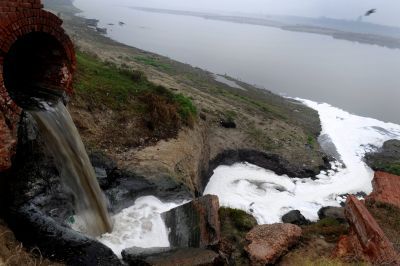
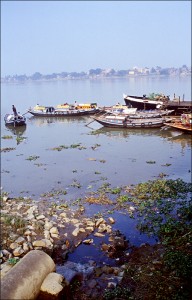

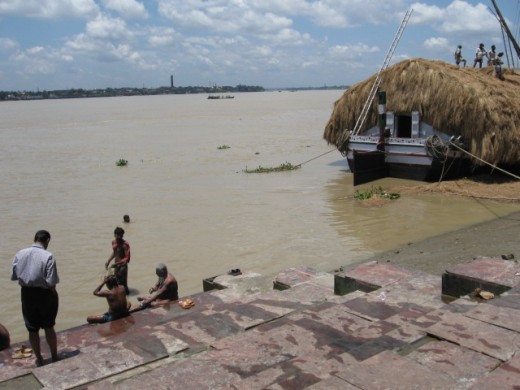

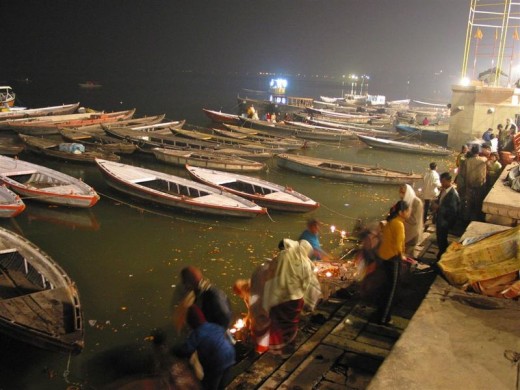
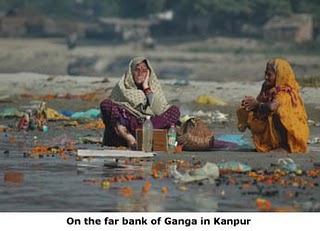
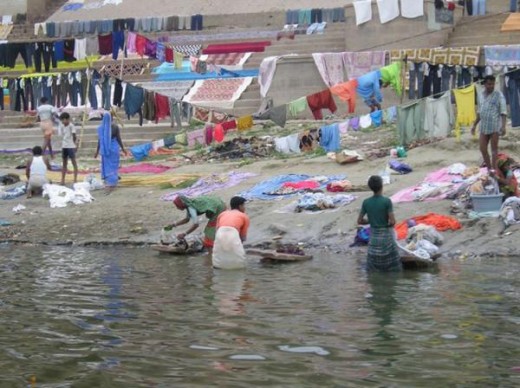
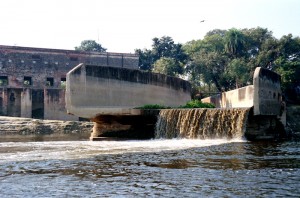
Although the Ganges is associated strongly with the myth and its water is considered to be holy and to have healing properties (first of all, the river carries bacteriophages that vanquish bacteria and more. As reported in a National Public Radio program, dysentery and cholera are killed off, preventing large-scale epidemics. The river has an unusual ability to retain dissolved oxygen, but the reason for this ability is unknown), the rampant pollution has marred its water quality. Even at Benares, the holiest city, the river is polluted by the twenty million gallons of untreated sewage which flows daily into the river from outlets between the "ghats" where people bathe. Years ago the World Bank built five pumping stations in the city to move sewage downstream of the city before it was discharged into the river, with the idea of eventually building a treatment plant. None of these pumps has ever worked, though all the money has been spent! As Ganga enters the Varanasi city, Hinduism’s sacred river contains 60,000 faecal coliform bacteria per 100 millilitres, 120 times more than is considered safe for bathing. Four miles downstream, with inputs from 24 gushing sewers and 60,000 pilgrim-bathers, the concentration is 3,000 times over the safety limit. In places, the Ganges becomes black and septic. Corpses, of semi-cremated adults or enshrouded babies, drift slowly by.
Nearly 89 million litres of sewage is daily disposed into Ganga from the 12 municipal towns that fall along its route till Haridwar. The amount of sewage disposed into the river increases during the Char Dham Yatra season when nearly 15 lakh pilgrims visit the state between May and October each year. Among the most polluting industries on the Ganges, are the tanneries, especially near Kanpur, which empty toxic chrome into the river. The majority of chemicals discharged into aquatic system eventually end up in sediments that may act as a sink of pollution as well as a source of pollution.
The river basin also has sugar and paper mills, cloth, woolen, cotton and rayon mills, battery industries, thermal powerhouses, distilleris and fertilizer corporations. Heavy metals such as cadmium, zinc, nickel, lead, chromium and copper are concentrated in the river water and the sediments. In 1995 the Central Pollution Control board (CPCB) listed 191 polluting industries in the state of Uttar Pradesh, 6 in the state of Bihar, and 67 in West Bengal. These industries were found to be discharging toxic substances into the effluent flows with BOD (biological oxygen demand) concentrations of more than 100 milligrams per liter. However industry is not the only source of pollution.
Around 1 billion liters of untreated municipal waste also flow into the river. In addition, inadequate cremation procedures and surface run off from farmalands where chemical fertilizers and pesticides are applied to contribute to the pollution of the Ganges. Let the numbers talk: all of the raw sewage from the urban centers, over 1.3 billion liters/day goes directly into the river. An estimated 6 million tons of chemical fertilizers and around 9,000 tons of pesticides are added to the Ganges water each year.
Dr. D. S. Bhargava, an environmental engineer at the university of Roorkee, suggests that while the Ganges decomposes organic waste fifteen to twenty-five times faster than other rivers, no feat of organic decomposition can match the mass quantity of organic waste that is poured into its waters from the cities along its banks.
Another threat looming over the Ganges is the silt deposited in its higher reaches in the Himalaya. Taking stock of the situation, the Uttar Pradesh Forest department is planting trees in the catchment areas (areas where water gathers) to prevent the soil erosion. However, at the current rate of 3,000 hectares of forest a year, it will take 150 years to arrest the siltation fully!
Kanpur in the lap of Ganga
The healt of the Ganges is linked to what happens in the large industrial city of Kanpur, the major source of pollution for the Ganges. In addition to the domestic sewage of the city, which has a population of more than three million, Kanpur has a huge tanning industry, which consists of more than four hundred tanneries. Several of these date back to when Kanpur was the major center for supplying the british colonial army with leather saddles and other leather products. Particularly worrisome is the large amount of chromium used in the modern tanning process and then released into the Ganges with industrial effluents. In Kanpur city alone, though industrial effluents from tanneries are only about 8 million litres per day, they contribute ten times pollution load, since they are, at least, ten times more polluted then the municipal waste-water in terms of biochemical oxygen demand (BOD) parameter alone. The tannery industry mushrooming in North India has converted the Ganga River into a dumping ground. Unfortunately, this is a boom time for leather processing in India, which many view as a form of eco-environmental dumping on the third world, and with the lax and lubricable implementation systems of the U.P. Government, it does not seem likely that this will go down. The tanning industry discharges different types of waste into the environment, primarily in the form of liquid effluents containing organic matters, chromium, sulphide ammonium and other salts. As per an estimate, about 80-90% of the tanneries use chromium as a tanning agent. Of this, the hides take up only 50-70%, while the rest is discharged as effluent. Pollution becomes acute when tanneries are concentrated in clusters in small area like Kanpur. Consequently, the Leather-tanning sector is included in the Red category of industries due to the potential adverse environmental impact caused by tannery wastes.
So industrial waste are far more harmful as these effluents are invariably more toxic, injurious to human health, and, usually non- biodegradable. About 70% of ailments such as typhoid, jaundice, cholera, diarrhoea and dysentery emanate from polluted water, taking more than 10 lakh lives in India every year, because most of the people live with them undetected or untreated.
At the close of 2002, The "Hindustan Times" ran an article summing up the efforts to date: "Despite the gevernment pouring in lakhs of rupees into the second phase of the Ganga Action Plan, which envisaged restoring also the Yamuna river to its old pristine self, the pollution levels in the river remain very high. The ambitious plan to clean the river has clearly flopped." To help clean up the river, the indian government has planned to build waste treatments plants in the basin's 29 large cities, but most of the sewage treatment plants are not yet completed or do not work very well! So, while proposals have been made for remediating this condition so far no great progress has been achieved...and still, the Giver of life to India is under attack...
Ganges River- Pollution
